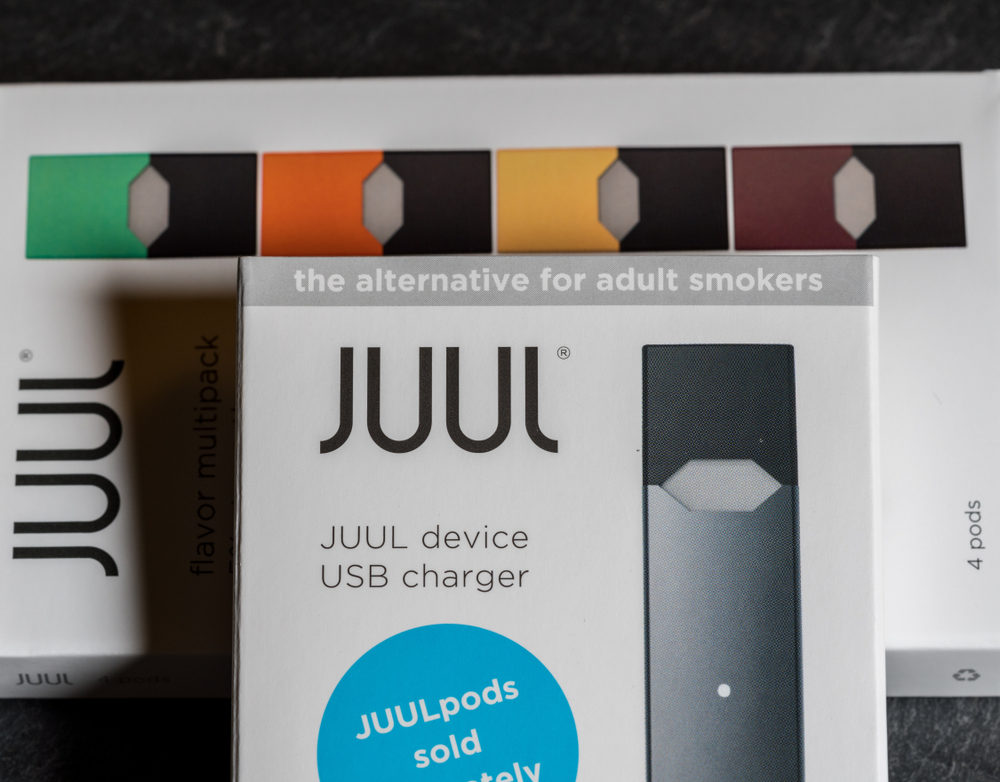Juul, E-Cigarette Addiction Risk Not Appreciated by Teens and Young Adults: Study

Teens use Juul pods to vape more often than other e-cigarette devices, according to the findings of a new study, which also suggests that the addiction risks are often not recognized by young users.
Researchers from Stanford University report that teens vape using Juul pods at twice the rate of other e-cigarette devices, and they also use the devices for a greater number of days overall, according to findings published last week in the medical journal JAMA Network Open.
The significantly greater use raises concerns about Juul addiction risks, as researchers indicate teens often mistakenly believe the devices are not addictive, highlighting a disconnect between how the products are perceived and how they are actually impacting their body.

Did You Know?
Change Healthcare Data Breach Impacts Millions of Customers
A massive Change Healthcare data breach exposed the names, social security numbers, medical and personal information of potentially 100 million Americans, which have now been released on the dark web. Lawsuits are being pursued to obtain financial compensation.
Learn MoreThe study involved a survey of 445 teens from 10 high schools in California between April 6 to June 20, 2018. The data was a part of a larger ongoing study focused on the perceptions of tobacco products.
Teens are using Juul e-cigarette pods much more frequently than other e-cigarette devices and traditional tobacco cigarettes, according to the findings. About half of teens had heard of Juul brand e-cigarettes, and about 16% said they had used the brand. Comparatively, 30% of teens have used other forms of e-cigarettes and one-quarter of teens said they have used tobacco cigarettes.
To evaluate the Juul e-cigarette addiction risks, researchers administered a “Hooked on Nicotine Checklist” as part of the survey published last week. Teenage Juul users vape with the devices more often and for a greater number of days than traditional cigarette smokers and regular e-cigarette users. Researchers said this points to an addictive pattern. Despite the data, most teens said they felt like they weren’t addicted to vaping.
Researchers noted the disconnect between what teens are reporting and their actual habits. The disconnect indicates teen perceptions are clouded as to how their bodies are responding to the nicotine.
Most teens said the fruit and candy-like flavors of e-cigarettes were the most appealing thing about the devices. About 28% said their first pod was fruit flavored and 27% said it was menthol or mint flavored.
E-cigarette Use Growing Among Teens
Although e-cigarettes are only approved for use among adults, manufacturers have heavily marketed the devices to teens and young adults, featuring candy-like flavors and designs that allow them to be easily hidden from parents and teachers.
Juul pods account for two-thirds of the U.S. e-cigarette market, which has skyrocketed in recent years. They are small devices that resemble a traditional USB flash drive, but contain nicotine e-liquid and are used to vape. However, each Juul pod can have as much nicotine as two packs of traditional cigarettes.
In another recent study, researchers indicated that nearly one-quarter of Juul’s Twitter followers are under the age of 18, with many adolescent followers retweeting the company’s messages, despite the company’s claim the products are not geared or marketed toward teens.
Another study indicated e-cigarette advertising reaches 80% of middle and high school students in the U.S.
E-cigarette convenience and appealing flavors are creating a new generation of tobacco addiction, health experts warn. E-cigarettes are now the most popular form of tobacco among U.S. teens and increase the likelihood children will try smoking tobacco cigarettes.






0 Comments